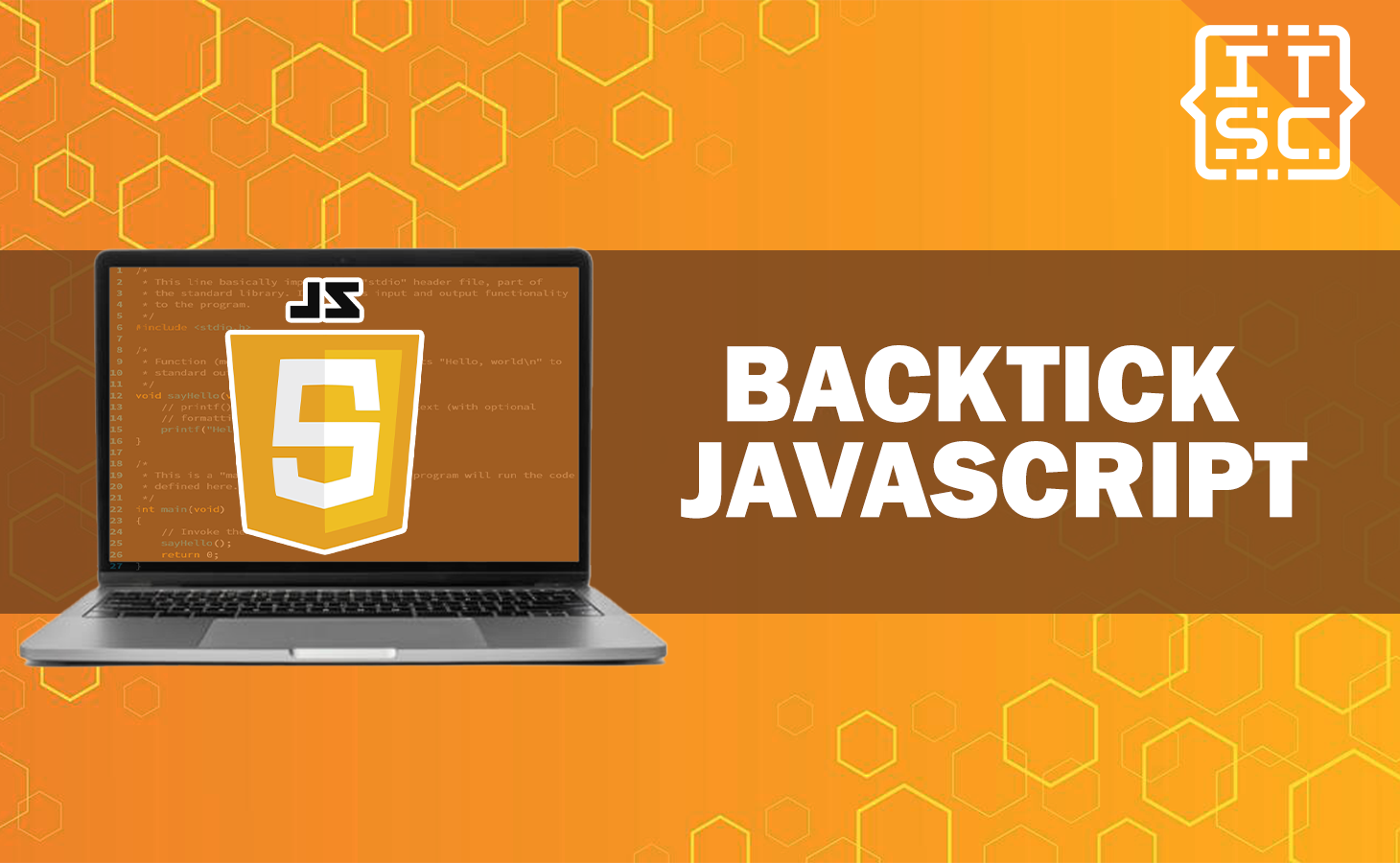Revolutionizing the way we write code, discover the power of backticks in JavaScript.
And learn how to write better code with template literals.
This article covers everything you need to know about using backticks to create multi-line strings, interpolate expressions, and customize template processing.
Let’s start to write cleaner and more efficient code today with the help of Backtick in JavaScript.
What are backticks in JavaScript?
JavaScript backtick refers to the use of template literals in JavaScript.
Template literals are a new feature introduced in ECMAScript 6 (ES6) that allows for the creation of multi-line strings and string interpolation.
They are enclosed by backtick (` `) characters instead of double (” “) or single quotes (‘ ‘), and can contain placeholders for string interpolation, which are denoted by a dollar sign and curly braces: $ {expression}`.
Template literals can be used to represent multi-line strings, and may use “interpolation” to insert variables.
In simple words. backticks are the characters used to define template literals, while template literals are the strings created using backticks.
How to use backticks in JavaScript?
The following are the different ways in which you can use backticks in JavaScript:
Use backticks to create Multi-line strings
You can use backticks to create multi-line strings without having to use escape characters or concatenation.
For example, you can create a multi-line string like this:
console.log(`sample string text line 1 from Itsourcecode
sample string text line 2 from Itsourcecode`); ✅The output would be:
sample string text line 1 from Itsourcecode
sample string text line 2 from ItsourcecodeUse backticks to interpolate expressions
You can use backticks to interpolate expressions within strings. It means you can insert the value of a variable or the result of an expression directly into a string.
You can also use template literals for string interpolation.
For example:
let website = "Itsourcecode";
console.log(`Hi, welcome to , ${website}!`);The output would be:
Hi, welcome to , Itsourcecode!Here’s another example:
let name = "Itsourcecode";
let age = 18;
let sampleinterpolatedString = `My name is ${name} and I am ${age} years old.`; ✅
console.log(sampleinterpolatedString);
Output:
My name is Itsourcecode and I am 18 years old.Use backticks to create tagged templates
You can use backticks to create tagged templates, which allow you to customize how template literals are processed.
A tagged template is created by placing a function name before the template literal, like this:
function myTag(strings, ...values) {
let result = '';
for (let i = 0; i < strings.length; i++) {
result += strings[i];
if (i < values.length) {
result += values[i];
}
}
return result;
}
let taggedTemplate = myTag`This is just a sample of tagged template created using backticks in JavaScript.`; ✅
console.log(taggedTemplate);
In this example, the myTag function takes in two arguments: strings and values.
The strings argument is an array of the string literals in the template literal, and the values argument is an array of the interpolated expressions.
The function concatenates the strings and values together to create the final result.
Output:
This is just a sample of tagged template created using backticks in JavaScript.Nesting template literals
You can nest template literals within other template literals to create complex strings.
Here’s an example:
let name = "Itsourcecode";
let age = 18;
let nestedTemplateLiteral = `My name is ${name} and I am ${age >= 18 ? `${age} years old, so I am an adult` : 'a minor'}.`;✅
console.log(nestedTemplateLiteral);The output would be:
My name is Itsourcecode and I am 18 years old, so I am an adult.Using expressions
You can use any valid JavaScript expression within the placeholders of a template literal. This includes arithmetic operations, function calls, and more.
Here’s an example:
let a = 50;
let b = 100;
let expressionTemplateLiteral = `The sum of ${a} and ${b} is ${a + b}.`; ✅
console.log(expressionTemplateLiteral);
The output, would be:
The sum of 50 and 100 is 150.Escaping characters
If you need to include a backtick character within a template literal, you can escape it using a backslash ().
Here’s an example:
let escapedBacktick = `This is a backtick: \``; ✅
console.log(escapedBacktick);
Output:
This is a backtick: `How to use backticks with conditional statements?
You can use backticks with conditional statements in JavaScript to create dynamic strings based on certain conditions.
Here’s an example:
let age = 16;
let message = `You are ${age >= 18 ? 'an adult' : 'a minor'}.`; ✅
console.log(message);
In this example, we use a ternary operator within the template literal to check if the value of the age variable is greater than or equal to 18.
If it is, the string ‘an adult’ is inserted into the template literal. Otherwise, the string ‘a minor’ is inserted.
When you run this code, the output will be:
Output:
You are a minor.Why backtick (`) is important in JavaScript?
The backtick (`) character is important in JavaScript because it is used to define template literals, which are a new type of string literal introduced in ECMAScript 6 (ES6).
Template literals provide several benefits over traditional string literals, including:
- Multi-line strings
- String interpolation
- Tagged templates
Conclusion
In conclusion, this article explores the power of backticks in JavaScript that will help you to write better code.
Backticks in JavaScript, also known as template literals, revolutionize the way we write code by allowing us to create multi-line strings, interpolate expressions, and customize template processing.
That offers a cleaner and more efficient way to work with strings in JavaScript.
Template literals are enclosed by backtick characters (` `) and provide significant advantages over traditional string literals, making them an essential feature for modern JavaScript development.
We are hoping that this article provides you with enough information that help you understand the backtick in JavaScript.
You can also check out the following article:
Thank you for reading itsourcecoders 😊.

